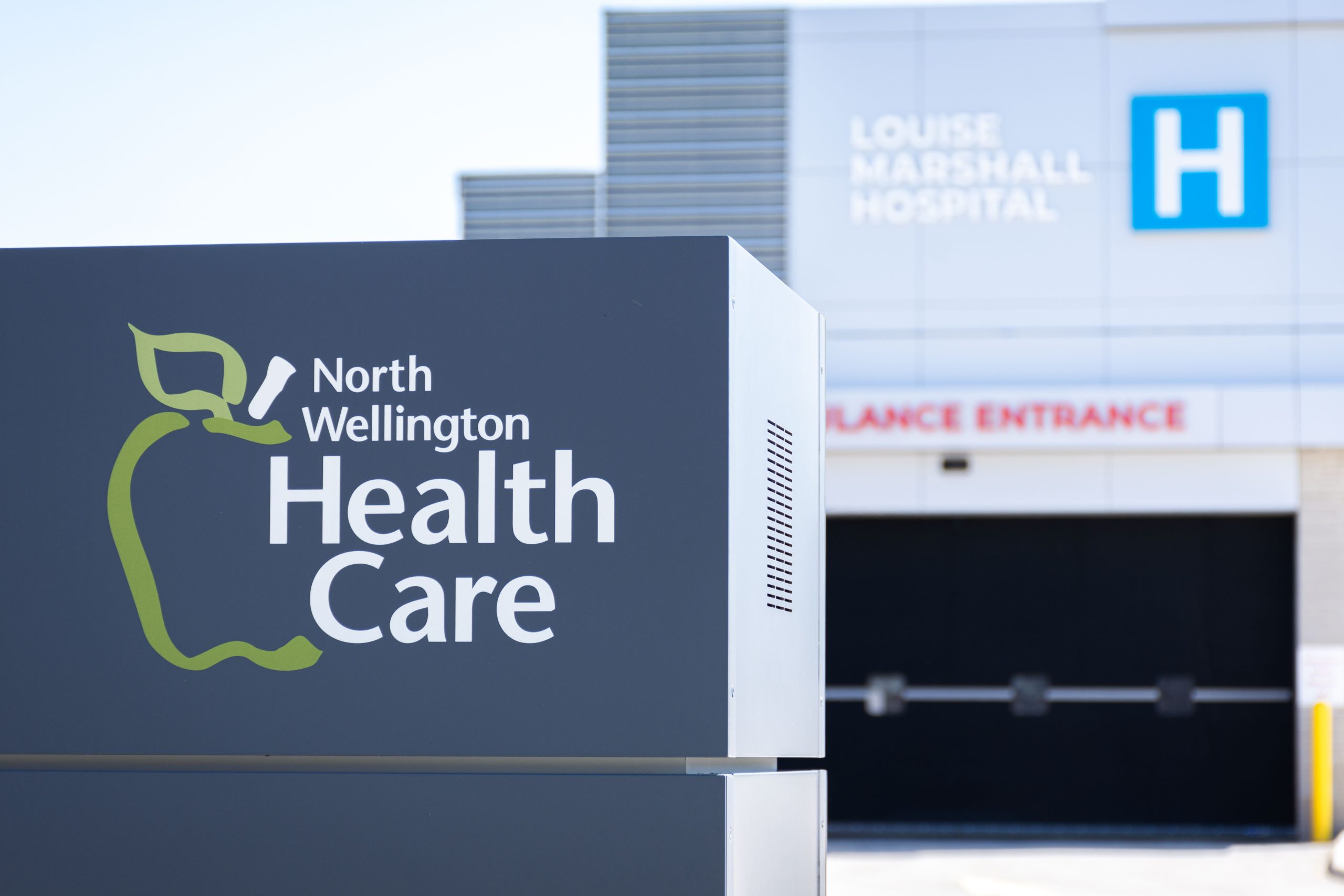KENILWORTH – Shorter operating hours at the hospital in Durham have not necessarily had an adverse impact on Mount Forest’s hospital.
That was one message shared by Wellington Health Care Alliance president and CEO Angela Stanley when she presented an update on Mount Forest’s Louise Marshall Hospital to Wellington North council on July 22.
“Since there has been a reduction of service in Durham, we have not seen an increase in our emergency department as a result of that,” Stanley told council.
In February, South Bruce Grey Health Care announced the Durham hospital emergency department would be closed overnight for an extended period, starting March 10, citing “nursing shortages” as the reason.
Stanley displayed some 2023-24 stats for Groves Memorial hospital in Fergus and North Wellington Health Care, which includes the Palmerston and Mount Forest hospitals.
They showed just over 21,000 emergency department visits in Fergus, and just over 24,500 in the northern hospitals.
She told council the Mount Forest hospital sees between 900 and 1,100 emergency visits per month, or about 12,000 per year, and the hospital hasn’t been adversely impacted by changes in Durham.
Stanley said there are a number of reasons for that.
“Most of them would typically go up to Hanover,” she said of Durham-area patients.
“We also have not seen an increase in our admissions,” Stanley said, adding there has been a stabilization in post-pandemic volumes.
“But patients are coming in sicker,” she said, in part due to an aging population and limited access to primary care.
“It does cause increased work load within the organization,” she said.
Louise Marshall has 15 in-patient beds with an average of 85 per cent occupancy.
“Because we’re a small hospital, our volume is … quite variable, so we can go anywhere from 50 per cent occupancy all the way up to 120% occupancy, and sometimes in one day,” Stanley said.
She provided a brief look at WHCA financial info – stating a deficit of about $1.7 million is projected for Louise Marshall for this fiscal period – before going on to talk more about emergency department closures.
“For us, when we have a closure of the emergency department, it is typically the result of two issues,” Stanley said.
The first is nurses calling in sick. The second is inter-facility transfers, usually on the weekend or overnight, when staff can’t be called in to replace the transfers, she said.
But she said ER closures are on the decline, presenting a graph showing the number of closures had peaked last summer – in quarter two of the 2023/24 fiscal year – at five.
There were another four closures in quarter three, two in quarter four, and only one so far in 2024/25. The decline is “not without a significant amount of effort,” Stanley said.
She went on to talk about physician recruitment: “We have a really robust resident program at Louise Marshall hospital, and that’s where we’ve seen a lot of success with primary care recruitment.”
She listed some doctors who have been recruited, including Dr. Natalya O’Neill, who is taking over for retired Mount Forest family doctor Hugh Perrin, as well as former Mount Forest family physician residents Dr. Kevin Kim and Dr. Amanda Hincks, who are providing additional support to the hospital.
“That has significantly helped us to stabilize our coverage with physicians in the emergency department,” she said.
There are also two new nurse practitioners offering a nurse-practitioner-led clinic in Minto-Mapleton to support unrostered patients, she added.
For nurse recruitment, the hospital takes part in a clinical extern program, a provincial program that provides funding to hire nursing students.
“We try and hire as local as possible,” said Stanley. “We’ve had significant success for recruitment that way.”
Since last summer, the hospital has hired 10 new registered nurses and three new registered practical nurses.
But she emphasized training for new nurses in community hospitals takes time.
“It takes 18 to 24 months plus for them to feel competent working alone in the emergency department,” she said.
The hospital’s strategy is to “always be recruiting,” she said. “Even when we think we don’t need anyone, we’re always recruiting.”
That involves increasing student placements within the organization, not just for nurses, but also in areas like the lab and imaging departments.
The hospital belongs to a southern Ontario physician recruitment group that works to recruit internationally-trained doctors, attends career fairs at local medical schools, and has a residency program to help with doctor recruitment.
When it comes to staff retention, efforts have included training days for nurses, improving scheduling, increasing the number of full-time nursing positions, and maximizing the scope of practice for registered practical nurses.
Community support is also important, said Stanley.
“If you see a new nurse in the emergency department, be patient with them; they’re learning,” she said.
“They are there to help you and they’re learning while they do that.”



